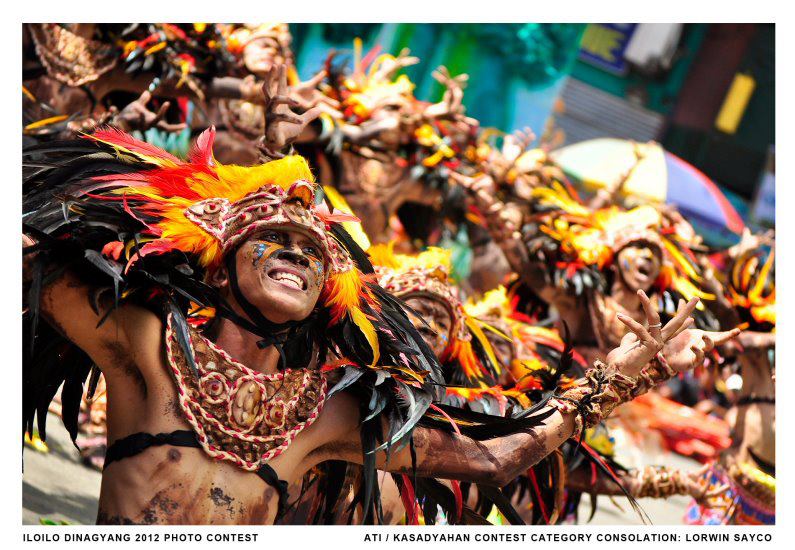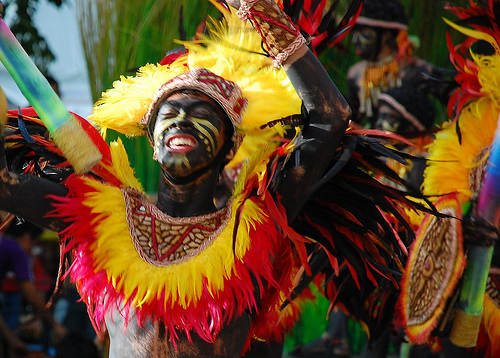The Dinagyang is a religious and cultural festival in Iloilo City, Philippines held on the fourth Sunday of January, or right after the Sinulog In Cebu and the Ati-Atihan in Aklan. It is held both to honor the Santo Niño and to celebrate the arrival on Panay of Malay settlers and the subsequent selling of the island to them by the Atis.
- Dinagyang 2014
- Kasadyahan 2014
- Miss Dinagyang 2014
- Schedule of Events
- Dinagyang Kiosk
- Live Bands and Concerts
- Tickets
 Dinagyang is Iloilo City’s version of the Ati-Atihan festival widely celebrated not only in Panay Island but also in other parts of the country. It may not be as ancient as the one in Kalibo in Aklan Province, but is definitely impressive in choreography and striking in terms of the various attires worn by participating tribes which reflect the ingenuity, craftsmanship and artistry of the Ilonggos.
Dinagyang is Iloilo City’s version of the Ati-Atihan festival widely celebrated not only in Panay Island but also in other parts of the country. It may not be as ancient as the one in Kalibo in Aklan Province, but is definitely impressive in choreography and striking in terms of the various attires worn by participating tribes which reflect the ingenuity, craftsmanship and artistry of the Ilonggos.
An Ilonggo term for revelry or merrymaking, Dinagyang was coined in 1977 by Ilonggo writer/broadcaster Pacifico Sudario to describe the riotous celebration. Prior to this, Dinagyang was labeled “Iloilo Ati-Atihan” to differentiate it from other Ati-Atihan festivals.
Iloilo Ati-Atihan dates back to the year 1967 when a replica of the image of Señor Santo Niño was first brought from Cebu by the San Jose Parish in Iloilo City. The image, accompanied by devotees from Cebu, was enthusiastically received at the Mandurriao Airport by the people of Iloilo.
In 1969, the Ati-Atihan contest became a part of the cultural aspect of the celebration with only four tribes participating. Since then, the celebration has progressed into a more colorful and pompous affair that includes the participation of more tribes and groups.
In 1974, the Dinagyang Festival played a vital role in the “Operation Balikbayan” program of the then Ministry of Tourism when some of the tribes provided tourists with a unique form of cultural entertainment.
In 1976, street revelry and audience participation were encouraged. From mere spectators of the performances of various competing tribes, the 1976 festivities offered people their first chance to wildly gyrate in the streets, to shed off inhibitions and to forget the cares, pressures and vexations of everyday life.
In 1977, an authentic Ati tribe from the mountains of Barotac Viejo was invited by the Dinagyang organizers and by the Regional Association of National Government Executives to perform and display their native dances.
From 1978 to the present, the Dinagyang Festival has evolved into a big religious and cultural activity supported by both the government and the private sectors. It now features cultural presentations, sports competitions and various side events.
The Festival was likewise adjudged the country’s tourism event of the year by the Association of Tourism Officers of the Philippines for three consecutive years from 2006 to 2008.


